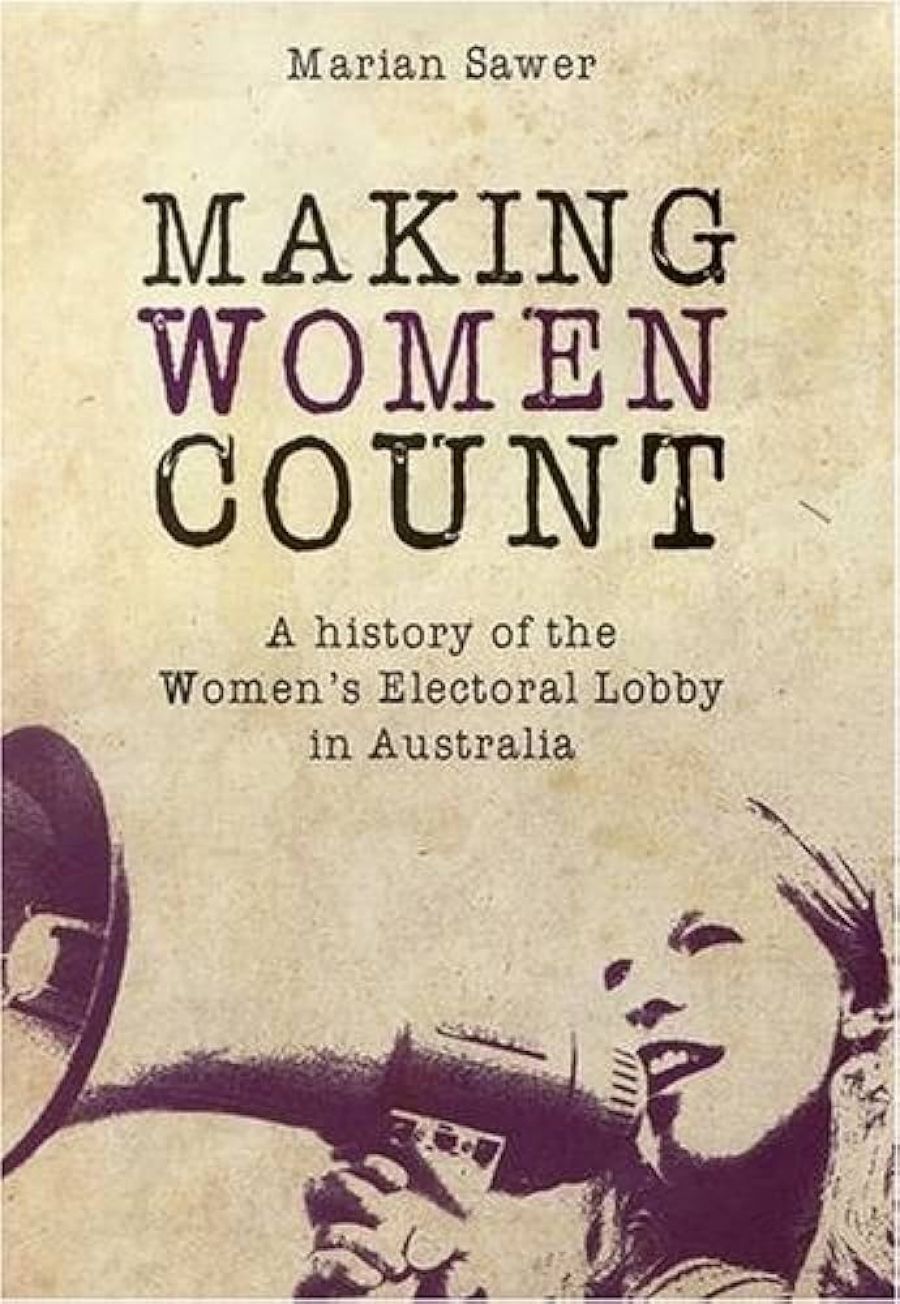
- Free Article: No
- Review Article: Yes
- Online Only: No
- Custom Highlight Text: Less revolutionary than Women’s Liberation, the Women’s Electoral Lobby (WEL) has been challenging the Australian system from the inside for more than thirty years. Social scientist Marian Sawer details WEL’s foundation, achievements and legacy, while situating it within the global women’s movement. A profusion of facts, figures, photographs and quotations are available for those interested in digging up the roots of feminist history. On the other hand, those seeking vibrant depictions of Australia’s second-wave feminist pioneers and their achievements will come away disappointed. To be fair, WEL’s collectivist and pragmatic nature is not amenable to a focus on charismatic leaders or radical action; however, Sawer’s chosen format has jumbled together information, with little standing out from the throng.
- Book 1 Title: Making Women Count
- Book 1 Subtitle: A history of the women’s electoral lobby in Australia
- Book 1 Biblio: UNSW Press, $39.95 pb, 337 pp
Sawer has divided her book into themed chapters, with nebulous titles such as ‘Organisational Dilemmas’ and ‘Shifting Frames’. More defined chapter sections skip between decades, often charting thirty years in the space of a few paragraphs. Perhaps due to the wealth of information available, people and events have been pared down to bare essentials, losing personal details and sometimes devolving into orgies of facts. Some figures are imbued with life, such as the veteran member Edna Ryan, ‘the tenth child in a working-class family’ who ‘tossed away her girdle’. Frequently, however, personalities are overshadowed by litanies of job descriptions and organisation titles.
Due to the controversial nature of its material, the book is not entirely dry. The bra-burning myth is dispelled, WEL members speak out, and the absurd sexist remarks of some politicians provide a source of amusement and outrage. For the most part, however, Sawer has created a serious, fact-laden account that holds WEL’s accomplishments up to both praise and scrutiny. As an academic reference it is invaluable, but the general reader may not be so absorbed.


Comments powered by CComment